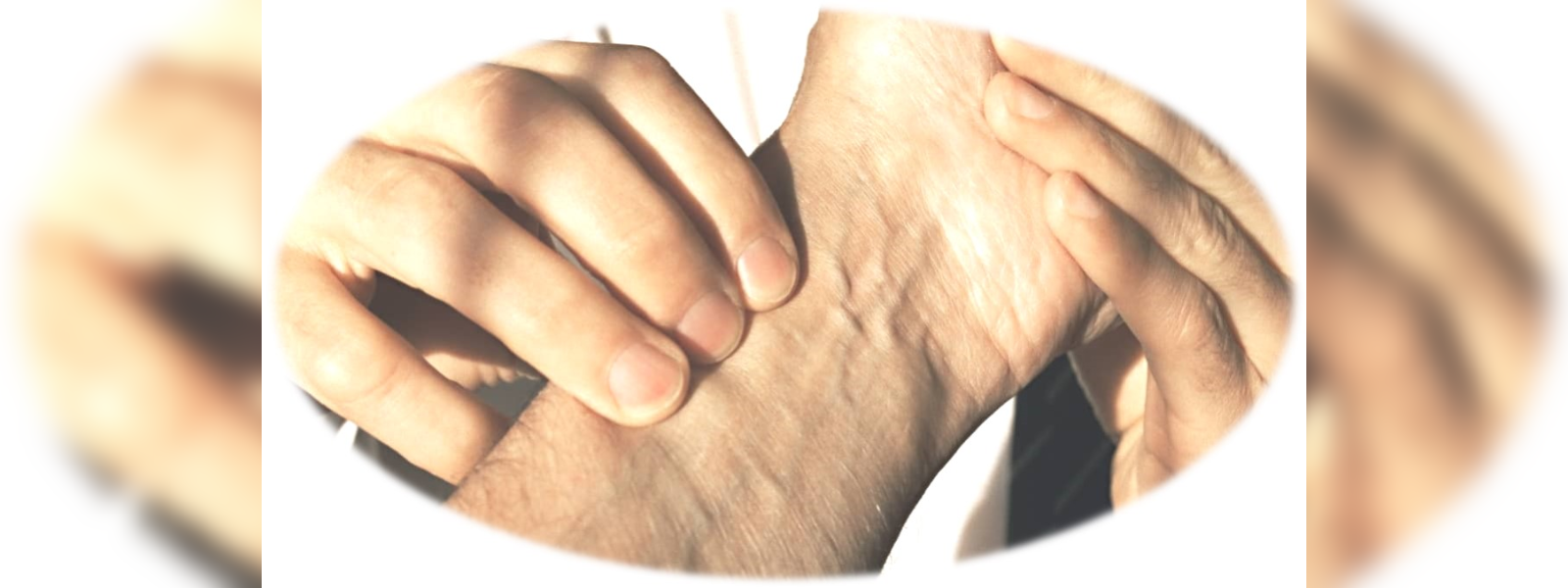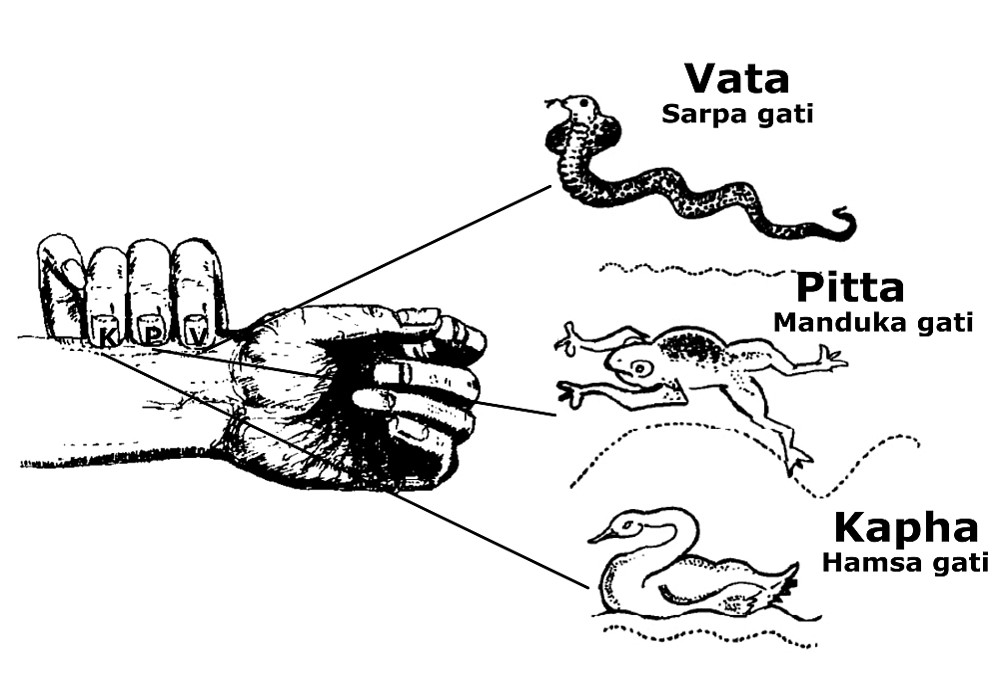
Pulse represents the heartbeat So, this is very much vital part of traditional diagnostic methodology which involves observation of circulatory movement of arteries of wrist (Pulse examination). This approaches based on the fact that the pulsations dictate the physiological status of the entire human body. It involves examination of pulse by applying pressure until to get maximum pulsation and then observation of various pulse phases with varying pressure.
Pulses need to be observed deeply, to predict physiological changes.Vata Nadi- Vata Nadi feels firm and fast movement that may be compare to movement of Sarpa (snake) and Jaluka (leech).
Pita Nadi- Pita Nadi feels jumping movement that may be compare to movement of Manduka (frog), Crow (kaka) and Kalinga (sparrow).
Kapha Nadi- slow movement that may be compare to movement of Hansa (swan).
Dwidoshas Nadi- Dwidoshage Nadi feel sometimes slow and sometimes quick.
Sannipataja Nadi- in Sannipataja Nadi feel like the movement of lava (bustard quail), Tittra (grey patridge and Vartaka (button quail).

The Nadi Vidwans feel them by placing their hand in a specific orientation on the patient?s wrist, as shown in above image. Also, it is said that analysis of hollow organs and semi-solid organs is done by feeling the nature of pulse at the deep and superficial layers of the wrist radial artery by applying proper external pressure


